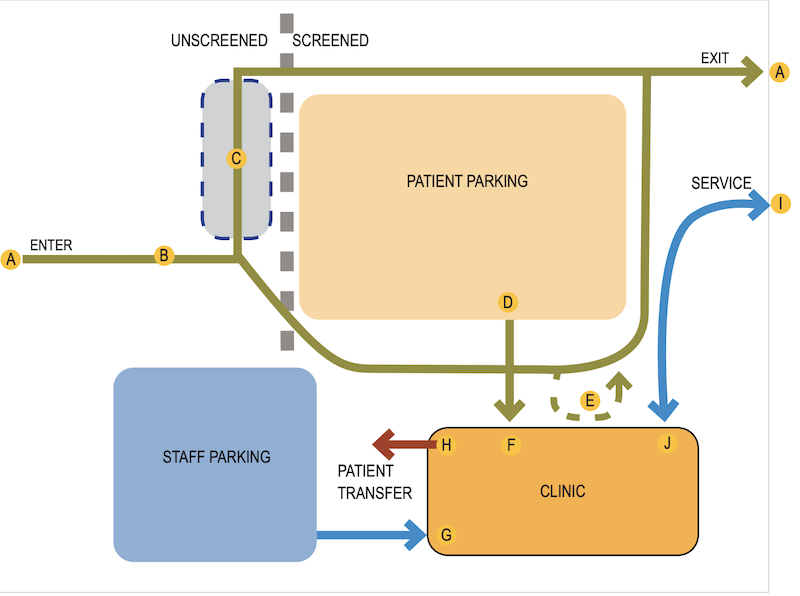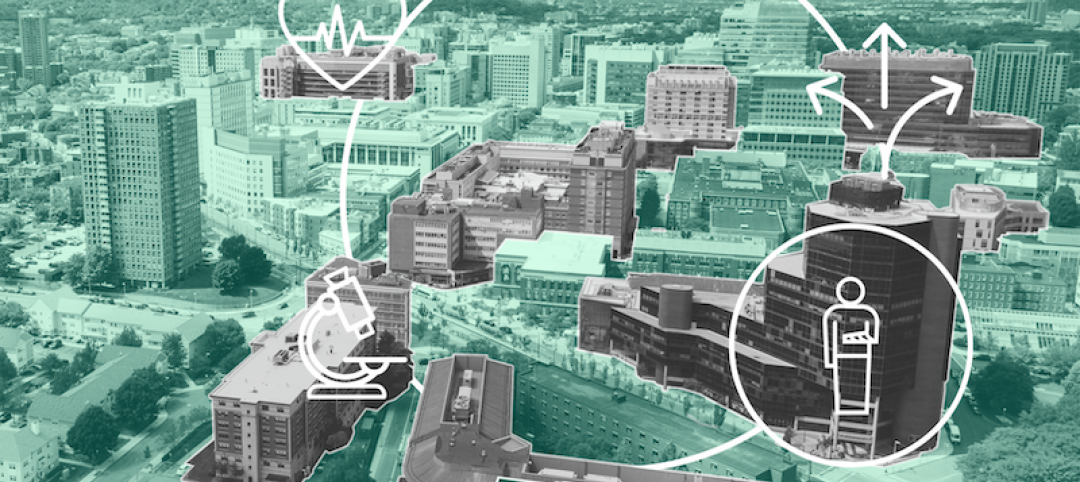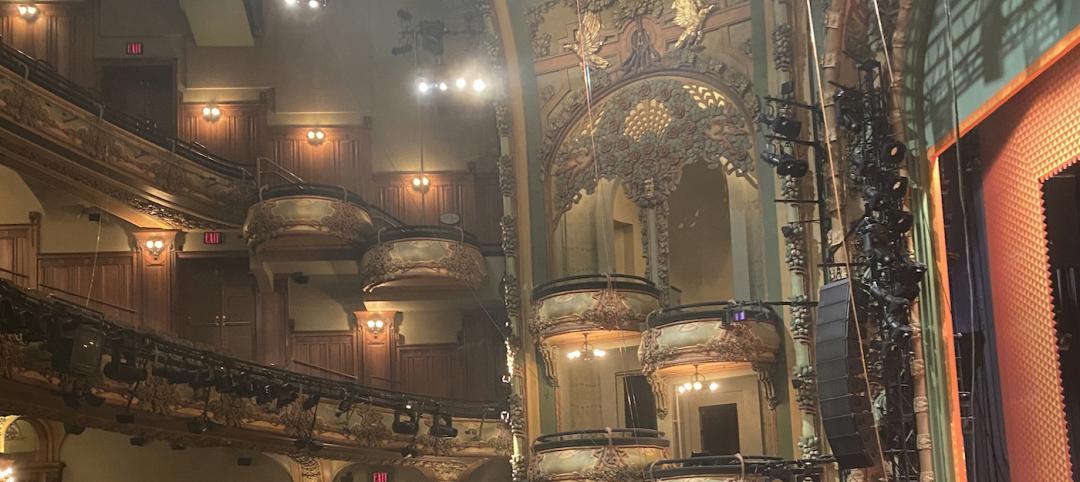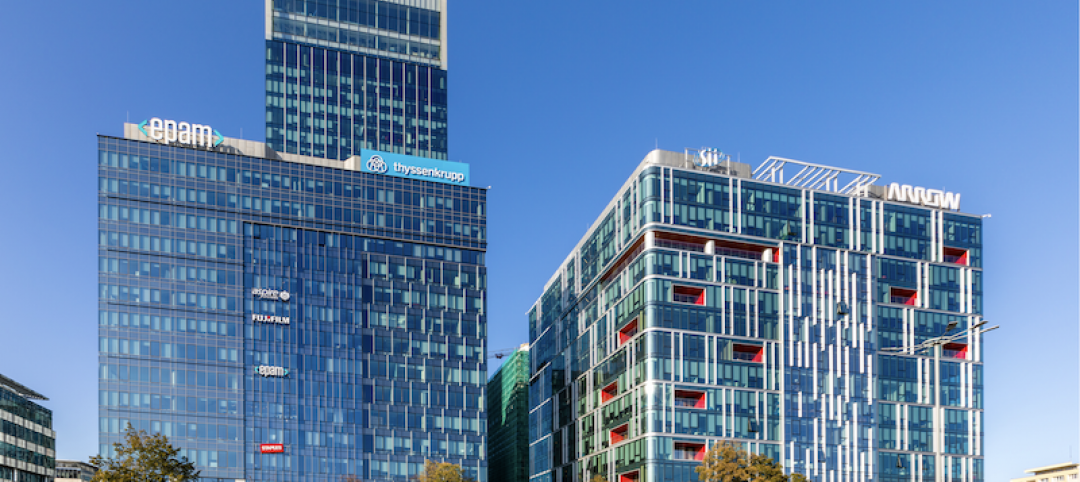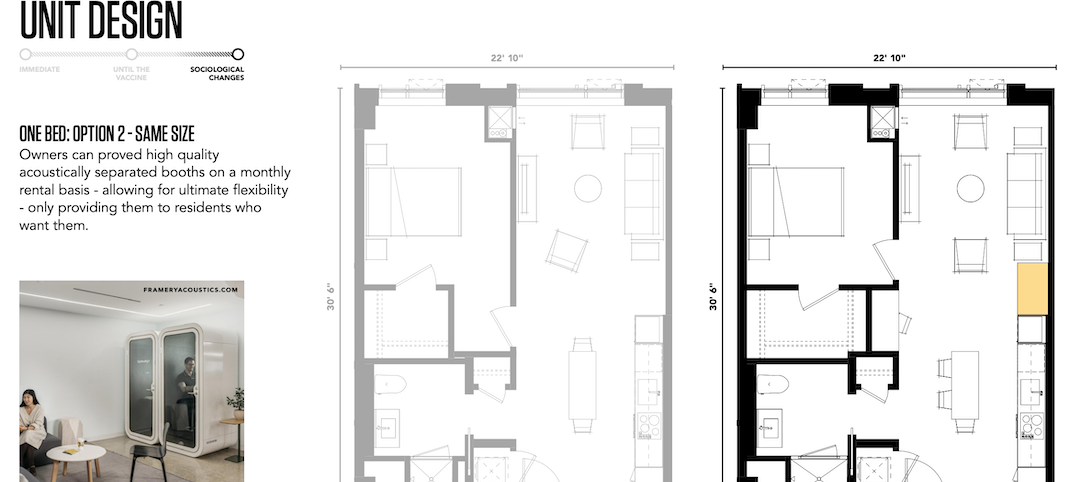Eppstein Uhen Architects (EUA) has released a 16-page guide that provides pandemic considerations for health facility design. The document focuses on four objectives:
1. Reducing patient presentations at facilities, with specific focuses on telehealth, site design and planning, and drive-through testing. For example, the guide’s considerations for reducing patient presentations include using the facility’s parking lot to manage who enters the building. It recommends a single point of entry and exit, a staffed gatehouse to direct and track patients (via smartphone technology), and drive-through services for pharmacies and labs.
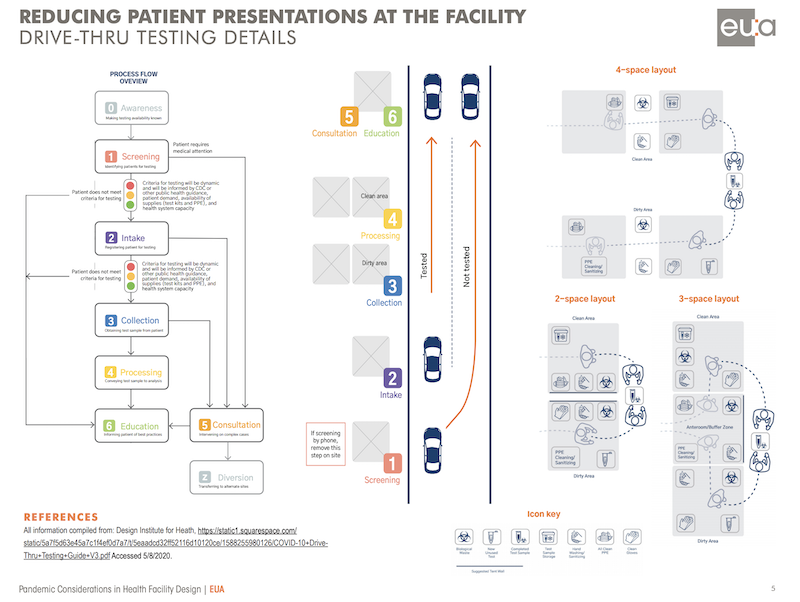 The guide emphasizes the importance of drive-through options for controlling who enters a healthcare building.
The guide emphasizes the importance of drive-through options for controlling who enters a healthcare building.
2. Isolating infectious patients, and how to prepare vestibules, entries, waiting rooms, and reception areas. The guide recommends larger vestibules to accommodate more functions and equipment, as well as temperature screening, physical distancing, and touchless entry supplemented by hand sanitizer stations and mask dispensers. Planning, the guide states, will also consider “placing a negative pressure multipurpose room adjacent to registration to isolate patients with symptoms of infectious diseases.
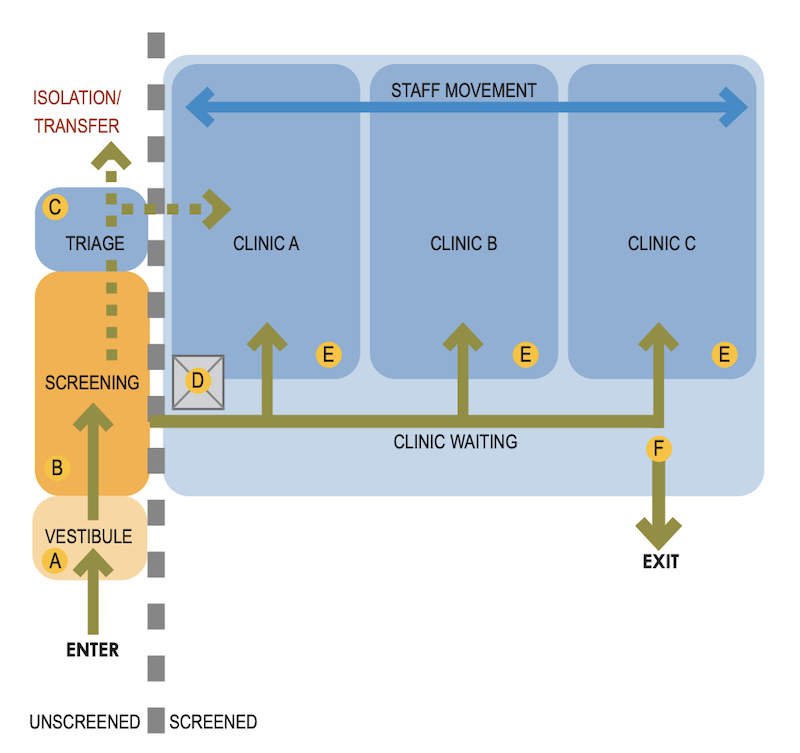 Screening patients as they enter a building is imperative.
Screening patients as they enter a building is imperative.
3. Improving facilities’ ability to reduce the spread of infection. The guide makes specific planning recommendations for clinics, hospital lobbies, emergency departments, elevators, materials management, and restrooms. Triage areas at the front door will help sort well and unwell patients. One-way patient flow will ensure patients don’t cross paths with potentially unwell patients who are entering the building.
For clinics, EUA favors a “library” model that includes community spaces (e.g., rooms for meetings and group therapies, physical therapy, or for staff break rooms) with access to the building’s main entrance. During a pandemic, a community space would be converted to serve as a buffer between screened and unscreened patients.
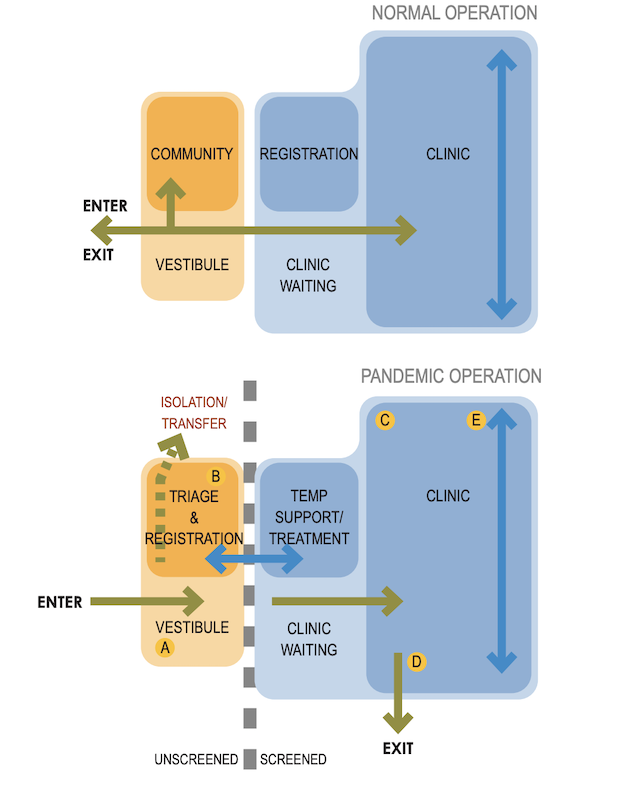 The guide recommends one-way traffic so that well and unwell patients don't intersect.
The guide recommends one-way traffic so that well and unwell patients don't intersect.
4. Providing surge capacity for high-volume episodes. The guide offers considerations for separating infected patients, providing separate entrances, ventilation (including providing a negative pressure relationship in the infectious side of the unit), and repurposing lower-acuity patient care spaces for increased patient beds.
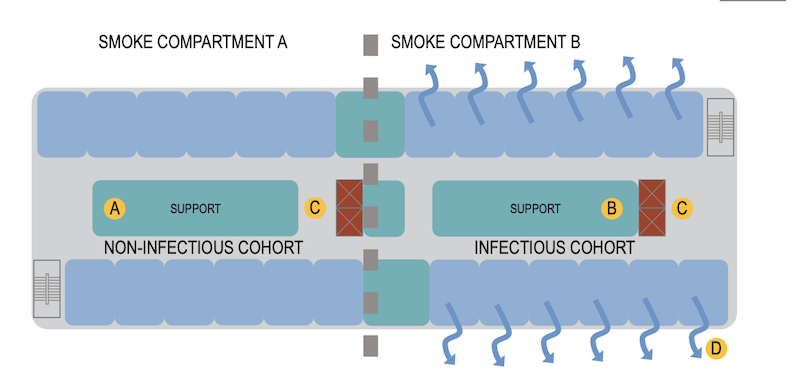 This diagram of an inpatient nursing unit shows how strategies can be employed to separate non-infectious and infectious patients in the same bed unit.
This diagram of an inpatient nursing unit shows how strategies can be employed to separate non-infectious and infectious patients in the same bed unit.
“Planning a building that seeks to fully address all aspects of operations during a pandemic is a major undertaking,” the guide concedes. Therefore, “it is important to be intentional about the decisions each organization makes around pandemic planning for each project.”
Related Stories
K-12 Schools | Jun 20, 2021
Los Angeles County issues design guidelines for extending PreK-12 learning to the outdoors
The report covers everything from funding and site prep recommendations to whether large rocks can be used as seating.
Coronavirus | May 17, 2021
Future pandemic preparedness at the medical district scale
The current COVID-19 pandemic highlights the concern that we will see more emergency events in the coming years.
University Buildings | Apr 29, 2021
The Weekly Show, April 29, 2021: COVID-19's impact on campus planning, and bird management strategies
This week on The Weekly show, BD+C Senior Editor John Caulfield interviews a duo of industry experts on 1) how campus planning has changed during the pandemic and 2) managing bird infestations on construction sites and completed buildings.
Multifamily Housing | Apr 22, 2021
The Weekly Show, Apr 22, 2021: COVID-19's impact on multifamily amenities
This week on The Weekly show, BD+C's Robert Cassidy speaks with three multifamily design experts about the impact of COVID-19 on apartment and condo amenities, based on the 2021 Multifamily Amenities Survey.
Industry Research | Apr 9, 2021
BD+C exclusive research: What building owners want from AEC firms
BD+C’s first-ever owners’ survey finds them focused on improving buildings’ performance for higher investment returns.
Coronavirus | Mar 31, 2021
Theatrical fog formula approved as antimicrobial air treatment
At least two solutions are being used to make ventilation systems safer.
Office Buildings | Mar 30, 2021
WELL Institute certifies a gigantic office complex with its highest health and safety rating
Poland’s Olivia Business Center one of the first to install ion air purification devices.
Multifamily Housing | Mar 27, 2021
Designing multifamily housing today for the post-Covid world of tomorrow
The multifamily market has changed dramatically due to the Covid pandemic. Here's how one architecture firm has accommodate their designs to what tenants are now demanding.
Office Buildings | Mar 26, 2021
Finding success for downtown office space after COVID-19
Using the right planning tools can spur new uses for Class B and C commercial real estate.
Coronavirus | Mar 11, 2021
The Weekly show, March 11, 2021: 5 building products for COVID-related conditions, and AI for MEP design
This week on The Weekly show, BD+C editors speak with AEC industry leaders about building products and systems that support COVID-related conditions, and an AI tool that automates the design of MEP systems.


